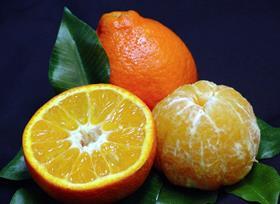
With citrus greening disease continuing to hurt the Florida industry, University of Florida (UF) scientists have developed a mandarin hybrid that, they say, seems to be winning the battle.
UF/IFAS researchers have discovered that a mandarin hybrid developed by colleagues contains cellular activity – known as metabolites -- that makes it more able to fend off greening than most other types of citrus.
It offers hope in the state’s battle against the disease that is severely damaging Florida’s multimillion dollar-a-year industry.
From field observation, scientists with UF/IFAS found the Sugar Belle mandarin in question is less affected by citrus greening than other mandarins, said Nabil Killiny, an assistant professor of plant pathology.
Killiny’s study focused on identifying the chemicals found in Sugar Belle trees that have been shown to fight against diseases in other plants.
Scientists at the UF/IFAS Citrus Research and Education Center in Lake Alfred, Florida found Sugar Belle mandarin is high in several volatiles and beneficial compounds – known as phenolics. These findings could tell scientists why the variety is more tolerant to Huanglongbing, or HLB, also known as citrus greening.
“The results of this study gives more insights about the mechanism behind tolerance of some citrus cultivars to HLB,” Killiny said. “Understanding of the mechanisms behind tolerance to HLB could help in developing economically tolerant citrus cultivars.”
UF/IFAS horticultural sciences professor Fred Gmitter and UF/IFAS professor Jude Grosser, co-authors on the new study, developed and released Sugar Belle mandarin in 2009 and say they’re very popular with growers. The mandarin hybrid -- a mix of the sweet Clementine and the colourful, bell-shaped Minneola -- has a rich taste and strong aroma, Gmitter said.
Since it spread to the Americas, greening has killed millions of trees and caused a sharp decline in production in many citrus growing regions.



